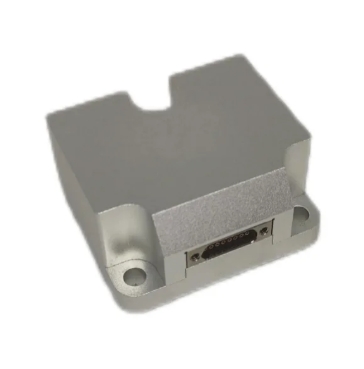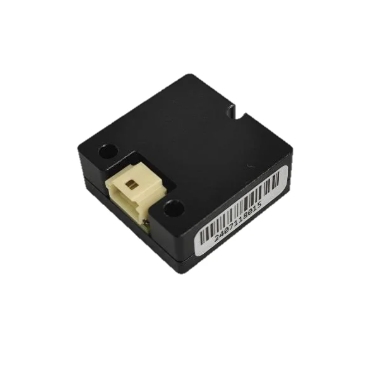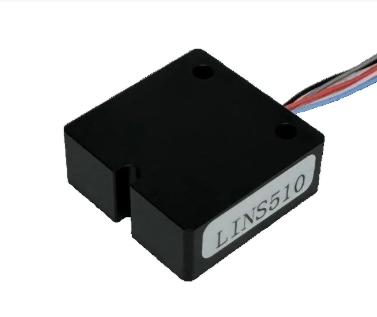As industries rapidly adopt smart technologies and autonomous systems, the demand for precise motion sensing and real-time positioning has never been greater. At the heart of this transformation lies a powerful yet compact solution—MEMS IMUs (Micro-Electro-Mechanical Systems Inertial Measurement Units). These advanced sensors are playing a pivotal role in industrial automation and robotics, enabling machines to navigate, adapt, and perform with exceptional precision.
In this article, we’ll explore how MEMS IMUs are revolutionizing industrial operations and how LINS, a high-tech enterprise focused on the research, development, and integration of inertial sensing technologies, is leading innovation in this field.
What Are MEMS IMUs?
A MEMS IMU is a compact sensor module that typically includes gyroscopes, accelerometers, and sometimes magnetometers, allowing it to measure:
Angular velocity (rotation)
Linear acceleration
Orientation and movement in 3D space
MEMS IMUs are highly valued for their small size, low power consumption, and cost-effectiveness, making them ideal for embedded systems in industrial and robotic applications.

Why MEMS IMUs Are Critical in Industrial Automation and Robotics
1. Precision Motion Tracking
Modern industrial systems—from robotic arms to AGVs (Automated Guided Vehicles)—require precise motion tracking to perform tasks accurately. MEMS IMUs provide high-resolution data for:
Path correction
Vibration compensation
Arm and tool positioning
Real-time orientation
LINS specializes in developing high-accuracy MEMS-based inertial sensors that ensure stable and reliable motion tracking, even in dynamic and complex environments.
2. Enhancing Autonomous Navigation
Autonomous robots, drones, and mobile industrial platforms rely on MEMS IMUs for inertial navigation, especially in GPS-denied environments such as factories, tunnels, or warehouses.
By fusing IMU data with other sensors (like LiDAR or vision), these systems can:
Map surroundings
Maintain orientation
Detect obstacles
Navigate precisely indoors
LINS’s advanced inertial modules are designed for seamless integration into autonomous systems, offering robust navigation performance under various operational conditions.
3. Improving System Feedback and Control Loops
For automated machinery, real-time feedback is crucial to maintaining performance and safety. MEMS IMUs contribute to closed-loop control systems by:
Monitoring motion and vibrations
Detecting system deviations or faults
Enabling self-correction mechanisms
LINS’s IMUs deliver low-latency, high-frequency data output, ideal for real-time control systems in CNC machines, pick-and-place robots, and precision assembly equipment.
4. Durability in Harsh Industrial Environments
Industrial settings often involve temperature fluctuations, vibrations, dust, and electromagnetic interference. MEMS IMUs from LINS are engineered with industrial-grade components to withstand such conditions, offering:
Wide temperature range operation
Vibration resistance
Long-term stability
High MTBF (Mean Time Between Failures)
Their products undergo rigorous testing to ensure performance in demanding applications such as mining automation, heavy machinery, and outdoor robotics.
5. Enabling Predictive Maintenance and Analytics
With growing emphasis on Industry 4.0 and IIoT (Industrial Internet of Things), MEMS IMUs also serve as valuable tools for predictive maintenance. By tracking motion anomalies and subtle vibrations, these sensors help detect:
Early signs of mechanical wear
Misalignment
Imbalances or degradation
LINS offers customized sensor solutions that integrate easily into smart maintenance systems, contributing to reduced downtime and increased productivity.

Applications of MEMS IMUs in Industry and Robotics
MEMS IMUs are used across a broad spectrum of industrial applications, including:
Industrial Robots – for arm movement tracking and joint control
AGVs & AMRs – for autonomous navigation and localization
Drones & UAVs – for flight stabilization and obstacle avoidance
Precision Machining – for vibration monitoring and error correction
Mining & Construction Equipment – for orientation and tilt sensing
Industrial Automation Systems – for motion control and system diagnostics
LINS: A Leader in Inertial Sensing Technology
LINS is a high-tech company with a strong focus on inertial sensor innovation, system integration, and product reliability. Through continuous R&D, the company has developed a full range of MEMS IMUs, INS (Inertial Navigation Systems), and custom solutions that serve demanding industrial and robotic applications.
Why Choose LINS?
Core R&D expertise in MEMS-based inertial sensing
Integrated product design from sensor to system level
High precision, high reliability IMUs
Strong customization capabilities for specific industrial needs
Commitment to innovation and client satisfaction
Whether you need high-performance inertial modules for autonomous platforms or cost-effective IMUs for smart devices, LINS offers proven solutions tailored for real-world applications.

Conclusion
As industrial automation and robotics continue to evolve, MEMS IMUs have become indispensable tools—enabling intelligent motion, enhancing navigation, and improving system efficiency. From precise robotic movements to autonomous navigation and machine health monitoring, these compact sensors are shaping the future of smart manufacturing.
LINS, with its strong foundation in inertial sensing technology and integrated system development, stands at the forefront of this transformation—empowering industries with advanced, reliable, and customizable MEMS IMU solutions.
Key Features of MEMS IMUs That Drive Precision and Efficiency
www.lins-imu.com
Wuxi LINS Technology Co., Ltd.
